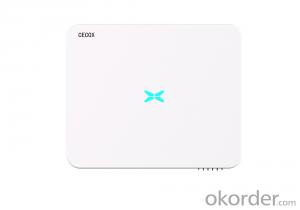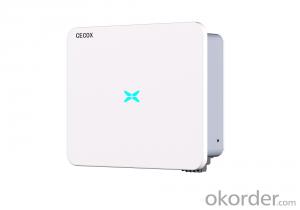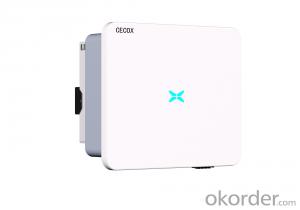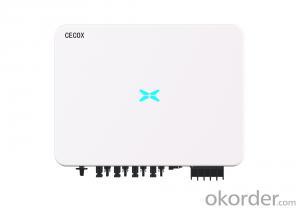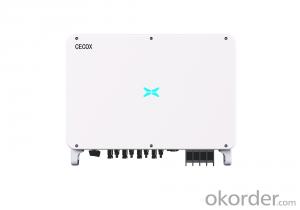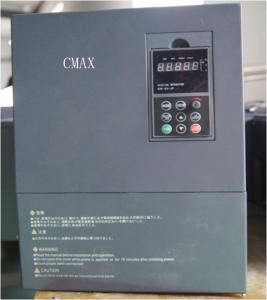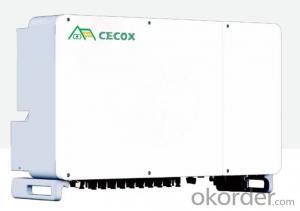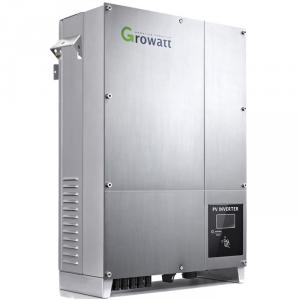17kW 20kW 22kW 25kW Three Phase On-Grid Solar Inverter
- Loading Port:
- China main port
- Payment Terms:
- TT or LC
- Min Order Qty:
- 30 unit
- Supply Capability:
- 500 unit/month
OKorder Service Pledge
OKorder Financial Service
You Might Also Like
Specification
XG17kW-25kW Three Phase On-Grid Solar Inverter
XG17KTR | XG20KTR | XG22KTR | XG25KTR | |
Input(DC) | ||||
Max. Input Power | 27.2 kW | 32kW | 35.2 kW | 40 kW |
Max. Input Voltage | 1100v | |||
Start Voltage | 250v | |||
Rated Input Voltage | 600v | |||
Full-load MPP Voltage Range | 480V~800 V | 520V~ 800V | 560V~800V | |
MPPT Voltage Range | 200 V~1000V | |||
Number of MPP Trackers | 2 | |||
Number of string per MPPT | 2/2 | 2/3 | ||
Max.Current per MPPT | 32A | 32A/48A | ||
Max.Short Circuit Current per MPPT | 40A | 40A/60A | ||
Output(AC) | ||||
Max. Output Current | 27.2A | 32.1A | 35.3A | 39.8A |
Rated Output Power | 17kW | 20kW | 22kW | 25kW |
Max. Output Power | 18.8 kVA | 22.2 kVA | 24.4kVA | 27.5kVA |
Rated Grid Frequency | 50Hz/60Hz | |||
Rated Grid Voltage | 230Vac/ 400Vac,3L/N/PE | |||
Power Factor | >0.99(0.8leading-0.8 lagging) | |||
THDi | <3%(Rated Power) | |||
Efficiency | ||||
Max. Efficiency | 98,40% | |||
European Efficiency | 98,00% | |||
MPPT Efficiency | 99,90% | |||
Protection | ||||
DC reverse polarity protection | Yes | |||
Anti-Islanding protection | Yes | |||
AC short circuit protection | Yes | |||
Residual current monitoring unit | Yes | |||
Insulation resistance monitoring | Yes | |||
Ground fault monitoring | Yes | |||
Grid monitoring | Yes | |||
PV string monitoring | Yes | |||
Surge protection | Type ll | |||
AFCI protection | Optional | |||
Communication | ||||
Display | LED/LCD /WiFi+App | |||
Communication | Standard: RS485 Optional: WiFi/GPRS/Ethernet | |||
Standard Compliance | ||||
Grid Connection Standards | IEC 61727, IEC 62116, IEC 60068, IEC 61683, VDE-AR-N 4110:2018, VDE-AR-N 4105:2018, VDE-AR-N 4120:2018, EN 50549, AS/NZS 4777.2:2020, CEI 0-21, VDE0126-1-1/A1 VFR 2014, UTE C15-712-1:2013, DEWA DRRG, NRS 097-2-1, MEA/PEA, C10/11, G98/G99 | |||
Safety/EMC | IEC 62109-1:2010, IEC 62109-2:2011, EN 61000-6-2:2005, EN 61000-6-3:2007/A1:2011 | |||
General Data | ||||
Dimensions (W*H*D) | 534x440x220 mm | |||
Weight | 24 kg | |||
Operating Temperature Range | -30° C ~ +60° C | |||
Cooling Method | Smart Cooling | |||
Protection Degree | IP66 | |||
Max. Operating Altitude | 4000 m | |||
Relative Humidity | 0~100% | |||
Topology | Transformerless | |||
Night Power Consumption | <1w | |||
MARKETING & SERVICE NETWORK
CNBM global sales team provides customers with professional and efficient pre-sale, in sale and after-sale services,
and enhances the added value of the brand with high-quality services.
Products Details:
High voltage protection Over load protection
Battery reverse connected protection Dust-proof
Low voltage protection Overheating protection
Output short-circuit protection Insect prevention
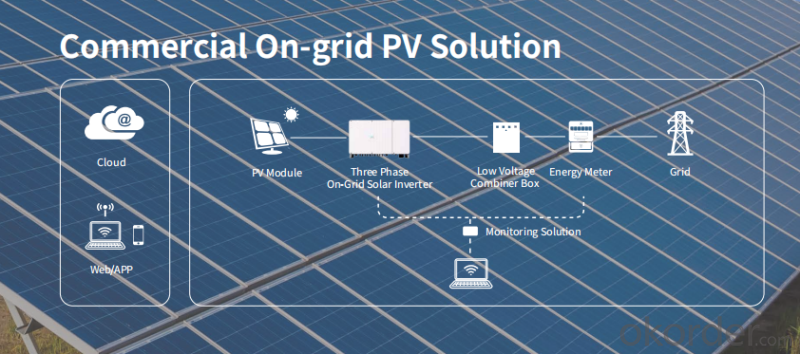

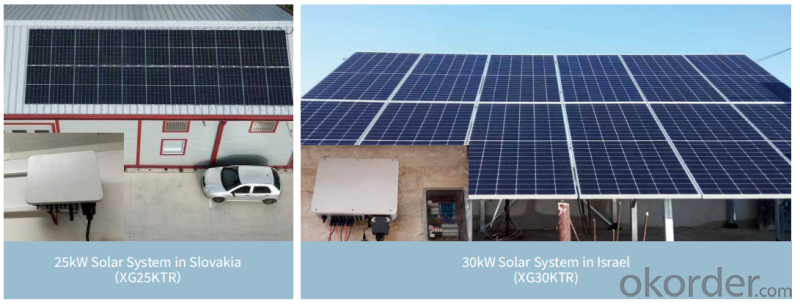

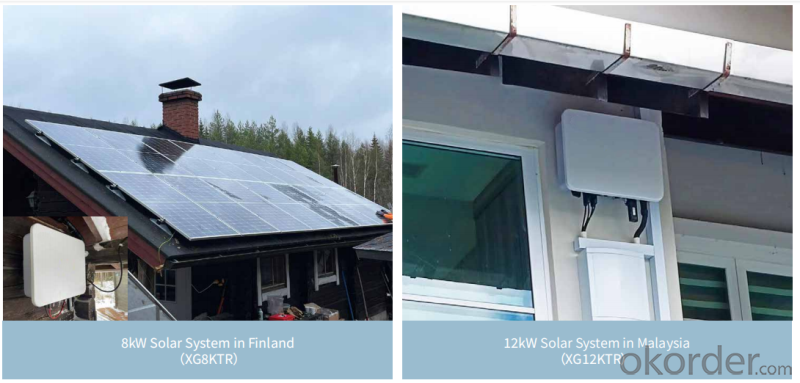
FAQ:
Q1:May I take some samples to test before placing the order ?
A1:Yes, welcome to take some sample to test!
Q2:How about the delivery time?
A2:7 days for sample; 25 days for bulk order.
Q3:What is the warranty of the controller?
A3:1 years warranty.
Q4:How to solve the technical problems?
A4:24 hours after-service consultancy just for you and to make your problem to be solved easily.
Q5:What payment methods do your company support?
A5:T/T, Western Union, Paypal, L/C etc.
Q6:What are the price terms can you offer for us?
A6:We can accept EXW, FOB, CIF and so on.
Q7:Do you have any certifications for your products?
A7:We have ISO9001:2000, CE, RoHS, certificates for all of our products.
- Q: Can a solar inverter be used in a net metering system?
- Yes, a solar inverter can be used in a net metering system. A solar inverter is an essential component of a solar energy system, as it converts the direct current (DC) electricity generated by solar panels into alternating current (AC) electricity that can be used to power homes and businesses. In a net metering system, excess electricity generated by the solar panels is fed back into the grid, and a solar inverter facilitates this process by synchronizing the electricity produced with the utility grid.
- Q: How do you connect solar panels to a solar inverter?
- To connect solar panels to a solar inverter, you need to follow a few steps. First, ensure that both the solar panels and the inverter are turned off. Then, connect the positive terminal of the solar panel to the positive terminal of the inverter using a DC cable. Similarly, connect the negative terminal of the solar panel to the negative terminal of the inverter. Make sure the connections are secure and tight. Finally, turn on the solar panels and the inverter, and you should have a successful connection between the two.
- Q: What is the role of a solar inverter in a solar power system?
- The role of a solar inverter in a solar power system is to convert the direct current (DC) electricity produced by the solar panels into alternating current (AC) electricity that can be used to power household appliances and be fed back into the electrical grid. The inverter also ensures that the power generated by the solar panels is at the correct voltage and frequency for safe and efficient use.
- Q: How does a solar inverter protect against lightning strikes?
- A solar inverter typically has built-in protective measures, such as surge protection devices and grounding systems, that help safeguard against lightning strikes. These protective measures divert the high voltage surge caused by lightning away from the inverter, ensuring its safety and preventing damage to the solar power system.
- Q: Can a solar inverter be used with different types of grid support functions?
- Yes, a solar inverter can be used with different types of grid support functions. Solar inverters are designed to convert the direct current (DC) produced by solar panels into alternating current (AC) that can be fed into the electrical grid. They can be equipped with various grid support functions like reactive power control, voltage regulation, and frequency control. These functions enable solar inverters to adapt to different grid requirements and contribute to grid stability and reliability.
- Q: What is the maximum AC output current that a solar inverter can provide?
- The maximum AC output current that a solar inverter can provide depends on its specifications and capacity. Different models and brands may have varying maximum AC output current ratings, typically ranging from a few amps to several hundred amps. It is important to consult the specific technical specifications of a particular solar inverter to determine its maximum AC output current capacity.
- Q: What is a solar inverter?
- A solar inverter is an electronic device that converts the direct current (DC) electricity generated by solar panels into alternating current (AC) electricity, which is suitable for use in homes, businesses, and the electrical grid.
- Q: How does a solar inverter handle voltage regulation during high demand?
- A solar inverter handles voltage regulation during high demand by carefully monitoring the voltage levels from the solar panels and adjusting its output accordingly. When there is high demand, the inverter can increase the voltage to meet the required levels. Additionally, some advanced inverters also have features like reactive power control and voltage regulation algorithms to ensure stable voltage supply during high demand situations.
- Q: What is the lifespan of a solar inverter?
- The lifespan of a solar inverter typically ranges from 10 to 15 years, depending on various factors such as the quality of the inverter, proper maintenance, and operating conditions.
- Q: Can a solar inverter be used in a solar-powered data center?
- Yes, a solar inverter can be used in a solar-powered data center. A solar inverter is an essential component of a solar power system that converts the direct current (DC) produced by solar panels into alternating current (AC) electricity, which is suitable for use in powering electronic equipment such as servers and data centers. By using a solar inverter, a solar-powered data center can efficiently utilize the electricity generated by solar panels, reducing its reliance on traditional grid power sources and promoting sustainability.
Send your message to us
17kW 20kW 22kW 25kW Three Phase On-Grid Solar Inverter
- Loading Port:
- China main port
- Payment Terms:
- TT or LC
- Min Order Qty:
- 30 unit
- Supply Capability:
- 500 unit/month
OKorder Service Pledge
OKorder Financial Service
Similar products
Hot products
Hot Searches
Related keywords
